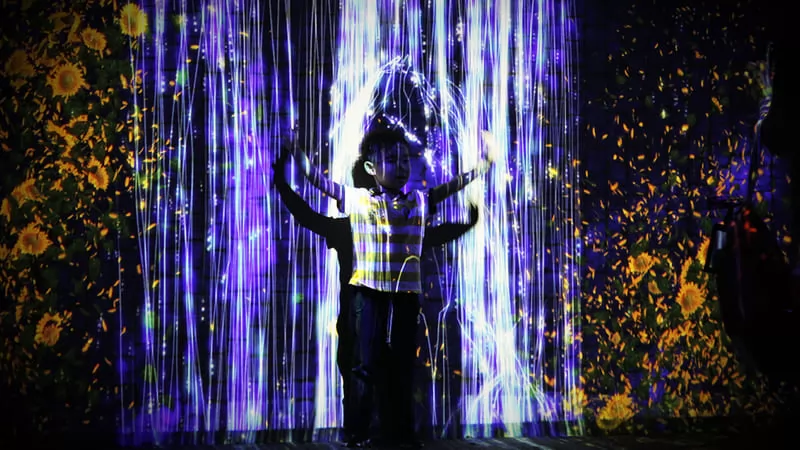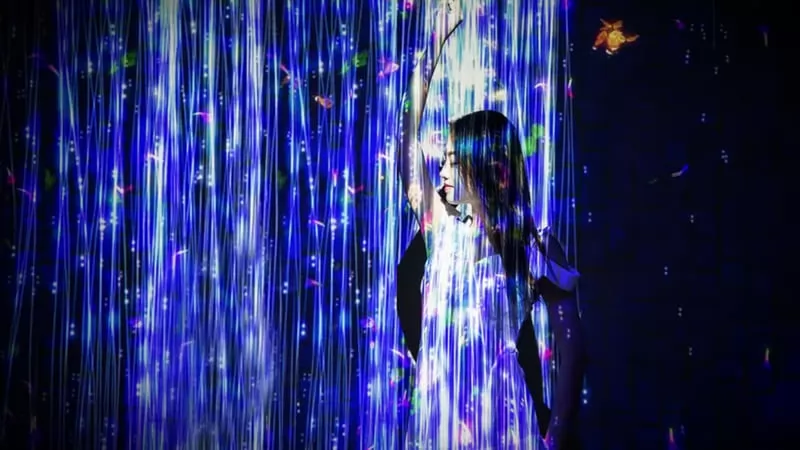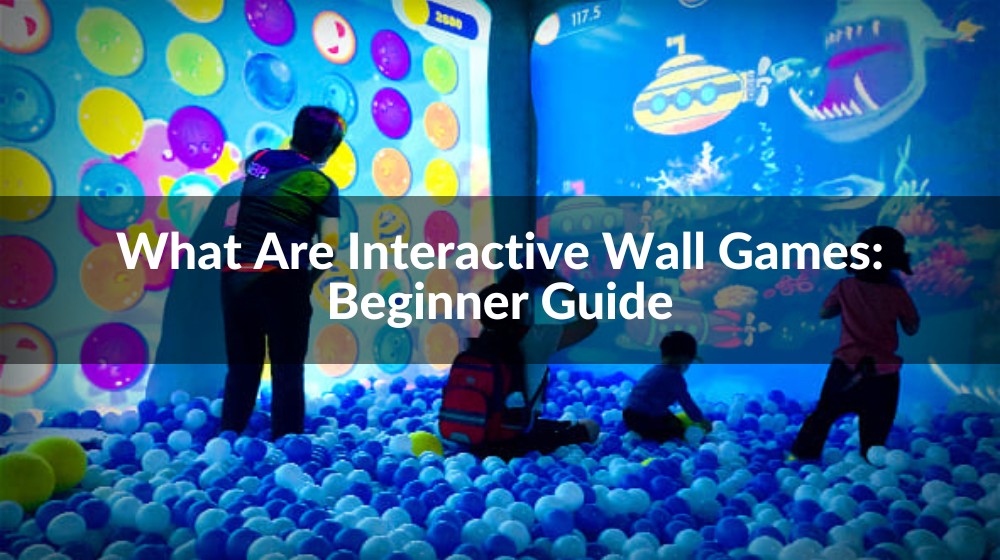Imagine stepping into a world where the boundaries between the physical and digital realms blur, creating an experience so captivating that it feels like stepping into a dream. This is the magic of immersive projection. From transforming ordinary spaces into extraordinary experiences to offering businesses a unique way to engage audiences, immersive projection is revolutionizing various industries. In this comprehensive guide, we'll explore what immersive projection is, why it’s essential, the technologies that make it possible, and the numerous applications it has across different sectors. Whether you're in education, healthcare, entertainment, or marketing, this technology offers endless possibilities to create memorable and impactful experiences. Join us as we delve into the world of immersive projection and discover how it can elevate your next project to new heights.
1. What Is Immersive Projection?
Immersive projection is a cutting-edge technology that transforms ordinary spaces into extraordinary experiences. It goes beyond traditional projection by enveloping viewers in a 360-degree environment, blurring the lines between the physical and digital worlds. This technology creates a sense of presence and immersion, making viewers feel like they are part of the content.
Unlike traditional flat screens, immersive projection can wrap around surfaces, such as walls or ceilings, creating a seamless canvas for content. This allows for a more engaging and interactive experience, as viewers can explore and interact with the content from all angles.
Immersive projection uses advanced software and hardware, including high-resolution projectors, motion tracking systems, and specialized projection surfaces, to create realistic and captivating environments. This technology is used in various industries, including entertainment, education, architecture, and advertising, to create unforgettable experiences and captivate audiences.

2. Why Use Immersive Projection?
Immersive projection technology is rapidly becoming a game-changer across various industries. But why should businesses consider integrating this advanced technology? Here, we delve into the top reasons why immersive projection is a must-have for enhancing user experience and driving brand engagement.
2.1 Enhance User Experience and Brand Value
One of the primary reasons to use immersive projection is its ability to significantly enhance user experience and brand value. Immersive experiences provide unforgettable interactions that can increase brand loyalty and elevate the perception of a brand. In commercial settings such as exhibitions, product launches, and brand events, immersive projection allows companies to create dynamic and engaging content that resonates with their audience.
For instance, imagine stepping into a booth at a trade show where the walls and floors are alive with interactive, high-definition visuals that reflect the brand’s identity and values. This not only creates a memorable impression but also strengthens the emotional connection between the brand and its audience, turning a simple visit into a remarkable experience. The result is a deeper emotional engagement, higher retention of brand messages, and an overall enhancement of brand equity.
2.2 Provide a Strong Sense of Immersion and Interaction
Immersive projection excels in creating environments that offer a strong sense of presence and interaction. When users enter a space enhanced by immersive projection, they often feel as though they have been transported to a different world. The lifelike, high-resolution visuals provide an escape from reality, allowing users to fully immerse themselves in the experience.
The interactivity further amplifies the sense of immersion. By responding to body movements and touch, the projected environment becomes a living, breathing space that reacts to the user’s actions. This interactive element not only captivates users but also encourages them to explore and engage more deeply with the content, fostering a more profound and memorable experience. It's an innovative way to engage users on a multisensory level, making them an active part of the narrative rather than just passive observers.
2.3 Flexibility and Sustainability
Another compelling reason to adopt immersive projection is its flexibility and sustainability. This technology is incredibly adaptable, making it suitable for a wide range of venues and applications. Whether it’s a large-scale exhibition hall or a small, confined space, immersive projection can be tailored to fit the specific needs of any environment. This adaptability makes it an ideal solution for diverse applications, from corporate events to educational settings.
Moreover, the content projected can be easily altered to match different themes, purposes, or events, providing a versatile tool for ongoing use. This flexibility extends the lifecycle of the technology, reducing the need for frequent upgrades and minimizing waste. In addition to its adaptability, immersive projection technology is also advancing in terms of energy efficiency. Modern projection systems are designed to be more energy-efficient and environmentally friendly, contributing to lower operational costs and reduced carbon footprints. This makes immersive projection not only a smart choice for creating engaging experiences but also a sustainable one that supports long-term environmental goals.

3. Technologies Powering Immersive Projection
Immersive projection relies on an array of sophisticated technologies that work together to create breathtaking, interactive environments. These technologies are essential for delivering the high-quality visuals and engaging experiences that define immersive projection. Let’s explore some of the key technologies that power this cutting-edge innovation.
3.1 High-Resolution Projectors
At the heart of immersive projection are high-resolution projectors. These projectors are capable of displaying ultra-sharp images that cover large surfaces without losing clarity or detail. The high pixel density of these projectors ensures that even the smallest details are rendered with precision, making the projected content incredibly lifelike.
High-resolution projectors come in various types, including laser projectors and LED projectors, each offering distinct advantages. Laser projectors, for instance, provide exceptional brightness and color accuracy, making them ideal for environments with ambient light. LED projectors, on the other hand, are known for their energy efficiency and long lifespan, making them a cost-effective option for long-term installations.
These projectors are also designed to work seamlessly with other components of the immersive projection system, such as 3D mapping software and interactive sensors, to create cohesive and immersive experiences. The ability to project high-quality images onto complex surfaces, such as curved walls and floors, is what makes immersive projection a powerful tool for creating dynamic environments.
3.2 3D Mapping Software
3D mapping software plays a crucial role in immersive projection by enabling the precise alignment of projected images onto physical surfaces. This technology uses advanced algorithms to map digital content onto three-dimensional surfaces, ensuring that the projected images align perfectly with the contours and dimensions of the projection area.
With 3D mapping, it's possible to transform any surface into a dynamic canvas for digital content. This includes irregular and non-flat surfaces, such as building facades, sculptures, and even entire rooms. The software adjusts the image geometry in real-time, correcting for distortions and ensuring that the visuals appear realistic from any viewing angle.
This capability is essential for creating immersive environments that feel natural and convincing. Whether it's for artistic installations, corporate presentations, or educational exhibits, 3D mapping software allows for the creation of visually stunning and engaging experiences that captivate audiences and leave a lasting impression.
3.3 VR Headsets and Accessories
While immersive projection primarily focuses on external projection onto physical spaces, virtual reality (VR) headsets and accessories also play a significant role in enhancing the overall experience. VR headsets provide a personal and immersive viewing experience, allowing users to be fully immersed in a virtual environment.
VR technology complements immersive projection by providing an additional layer of interaction and immersion. When used together, these technologies can create a hybrid experience where users can explore virtual environments in a more personal and interactive way. For example, a user could navigate through a virtual museum using a VR headset while also experiencing the physical space enhanced by immersive projection.
Accessories such as hand controllers, motion sensors, and haptic feedback devices further enhance the interactivity of VR experiences. These tools allow users to interact with the virtual environment in a natural and intuitive way, making the experience more engaging and memorable.
3.4 Interactive Sensors and Cameras
Interactive sensors and cameras are essential components of immersive projection systems, enabling real-time interaction between users and the projected content. These devices capture user movements and gestures, allowing the system to respond dynamically to the user's actions.
For example, motion sensors can track the position and movement of users within the projection space, enabling them to interact with the content by simply moving their hands or bodies. This creates a more engaging and interactive experience, as users can explore and manipulate the projected environment in real time.
Interactive cameras, such as depth-sensing cameras, can detect the distance and depth of objects in the environment, allowing for more precise and natural interactions. These cameras can also be used to create augmented reality (AR) experiences by overlaying digital content onto the physical world, further enhancing the immersive experience.
By integrating these sensors and cameras, immersive projection systems can create dynamic and interactive environments that respond to user input, making the experience more engaging and personalized. This technology is particularly valuable in applications such as interactive exhibits, virtual training simulations, and immersive entertainment experiences.

4. Applications of Immersive Projection
Immersive projection is revolutionizing various industries by providing innovative solutions that enhance user engagement and create memorable experiences. Its applications span across multiple sectors, each benefiting from the unique capabilities of this technology. Below, we explore some of the key areas where immersive projection is making a significant impact.
4.1 Entertainment and Events
In the realm of entertainment and events, immersive projection has become a game-changer. It transforms ordinary venues into dynamic spaces that captivate audiences and provide unparalleled experiences. Whether it's a music concert, a theatrical performance, or a corporate event, immersive projection can create visually stunning environments that enhance the overall experience.
For instance, at music festivals and concerts, immersive projection is used to create elaborate visual displays that synchronize with the music, providing a multi-sensory experience that engages attendees on a deeper level. The use of large-scale projections on stage backdrops and surrounding areas can turn any event into a visually captivating spectacle that leaves a lasting impression.
In the world of theater, immersive projection allows for the creation of dynamic stage sets that can change in real time, providing a more immersive and engaging experience for the audience. By projecting detailed and lifelike visuals onto the stage, immersive projection can transport viewers to different settings and time periods, enhancing the storytelling and emotional impact of the performance.
4.2 Education and Training
Immersive projection is also making significant strides in the field of education and training. By creating interactive and engaging learning environments, this technology enhances the educational experience and improves knowledge retention.
In classrooms, immersive projection can transform traditional lessons into interactive experiences that captivate students and foster a deeper understanding of the subject matter. For example, a history lesson can be brought to life with immersive projections that recreate historical events and environments, allowing students to explore and interact with the content in a more meaningful way.
Incorporating immersive projection in training programs can also provide realistic simulations that prepare individuals for real-world scenarios. For example, in medical training, immersive projection can create detailed anatomical models and surgical simulations that allow trainees to practice procedures in a safe and controlled environment. This hands-on experience enhances learning and helps develop the skills needed for success in their respective fields.
4.3 Healthcare and Therapy
In healthcare and therapy, immersive projection is being used to create therapeutic environments that support patient treatment and recovery. This technology offers new possibilities for enhancing patient care and improving health outcomes.
For example, immersive projection can be used to create calming and relaxing environments that help reduce stress and anxiety in patients. By projecting soothing images and sounds, healthcare providers can create a more comfortable and supportive atmosphere for patients undergoing treatment.
Immersive projection is also being used in therapeutic settings to create virtual environments that support various forms of therapy. For instance, in exposure therapy, patients can be gradually exposed to virtual environments that simulate their fears or anxieties, allowing them to confront and overcome their issues in a controlled and supportive setting.
4.4 Marketing and Advertising
In the world of marketing and advertising, immersive projection offers innovative ways to engage consumers and promote products and brands. By creating interactive and visually captivating experiences, this technology helps businesses stand out in a crowded marketplace and capture the attention of their target audience.
For example, in retail environments, immersive projection can be used to create dynamic and engaging displays that showcase products in a unique and memorable way. By projecting interactive content onto surfaces such as walls and floors, retailers can create immersive shopping experiences that encourage customers to explore and engage with the products.
In advertising campaigns, immersive projection can be used to create eye-catching installations that attract attention and drive brand awareness. For instance, outdoor projections can be used to transform building facades into dynamic billboards that display captivating visuals and interactive content. This not only creates a memorable impression but also encourages social media sharing and word-of-mouth marketing.

5. Advantages of Immersive Projection
Immersive projection is a powerful technology that offers numerous advantages across various applications. It enhances user engagement, provides creative freedom, delivers memorable experiences, and is highly versatile. Let’s dive into these benefits in detail to understand why immersive projection is becoming an essential tool in different industries.
5.1 Enhanced Engagement and Interaction
One of the most significant advantages of immersive projection is its ability to dramatically enhance user engagement and interaction. Traditional methods of presenting information often struggle to capture the attention of audiences, but immersive projection creates an engaging environment that draws people in and encourages active participation.
For instance, in an educational setting, immersive projection can transform a dull lecture into an interactive experience where students can explore and interact with content. This not only makes learning more enjoyable but also improves retention and understanding. Similarly, in marketing and advertising, immersive projection can create captivating displays that attract customers and encourage them to engage with the brand in a meaningful way.
The interactive nature of immersive projection allows users to physically engage with the content, whether it's through touch, motion, or even voice commands. This creates a deeper connection between the audience and the content, making the experience more memorable and impactful. By fostering active participation, immersive projection helps to build stronger emotional connections and enhances the overall effectiveness of the message being conveyed.
5.2 Creative Freedom in Design
Immersive projection offers unparalleled creative freedom in design, allowing for the creation of unique and innovative environments that captivate audiences. This technology enables designers to project digital content onto any surface, regardless of its shape or size, opening up endless possibilities for creative expression.
For example, in the entertainment industry, immersive projection can be used to create stunning stage designs that transform traditional performances into visually spectacular experiences. Artists and designers can project intricate animations, dynamic visuals, and even 3D effects onto stage elements, enhancing the overall production value and creating a more immersive experience for the audience.
In corporate settings, immersive projection can be used to create engaging presentations and product displays that stand out from the competition. By projecting detailed graphics and interactive content onto walls, floors, and other surfaces, businesses can create a visually engaging environment that captures the attention of their audience and communicates their message in a compelling way.
The flexibility of immersive projection allows for the creation of customized environments that can be tailored to fit the specific needs of any event or application. This creative freedom not only enhances the visual appeal of the content but also allows for the creation of unique and memorable experiences that leave a lasting impression on the audience.
5.3 Memorable Experiences for Audiences
Immersive projection has the unique ability to create memorable experiences that resonate with audiences long after the event has ended. By engaging multiple senses and creating a fully immersive environment, this technology leaves a lasting impression that traditional methods of presentation simply cannot match.
For instance, in the tourism and hospitality industry, immersive projection can be used to create interactive exhibits and attractions that transport visitors to different worlds and eras. This creates a unique and unforgettable experience that encourages repeat visits and positive word-of-mouth recommendations.
In the realm of events and entertainment, immersive projection can transform ordinary spaces into dynamic environments that captivate audiences and create a sense of wonder and excitement. Whether it's a music festival, a corporate event, or an art installation, immersive projection enhances the overall experience and ensures that the event is remembered long after it has ended.
By providing a more engaging and interactive experience, immersive projection helps to build stronger connections with the audience and creates positive associations with the content or brand being presented. This makes it an invaluable tool for businesses and organizations looking to create memorable experiences that resonate with their audience and leave a lasting impact.
5.4 Versatility in Various Settings
Another key advantage of immersive projection is its versatility, making it suitable for a wide range of applications and settings. Whether it's a small, intimate space or a large-scale event, immersive projection can be easily adapted to fit the specific requirements of any environment.
In retail, immersive projection can be used to create dynamic displays and interactive experiences that engage customers and encourage them to explore and interact with the products. This not only enhances the shopping experience but also helps to drive sales and build brand loyalty.
In education, immersive projection can be used to create interactive learning environments that engage students and enhance their understanding of complex subjects. By projecting detailed and interactive content onto walls, floors, and other surfaces, educators can create a more engaging and effective learning experience that improves knowledge retention and fosters a deeper understanding of the material.
In healthcare, immersive projection can be used to create calming and therapeutic environments that support patient care and treatment. By projecting soothing images and sounds, healthcare providers can create a more comfortable and supportive atmosphere for patients undergoing treatment, helping to reduce stress and anxiety and improve overall well-being.
Overall, the versatility of immersive projection makes it an invaluable tool for a wide range of applications, providing a flexible and adaptable solution that can be tailored to fit the specific needs of any environment or event.

6. How to Create an Immersive Space
Creating an immersive space is a multifaceted process that requires careful planning, strategic thinking, and a keen understanding of both the technology and the audience. Whether you're aiming to provide an entertainment experience, attract customer flow, or offer differentiated services, the creation of an immersive environment can significantly enhance user engagement and interaction. Here’s a step-by-step guide to help you create an effective and captivating immersive space.
6.1 Clarify Project Goals and Needs
Before embarking on the journey of creating an immersive space, it is crucial to clearly define the goals and needs of your project. Ask yourself the following questions:
- What is the primary objective? Are you looking to entertain, educate, or market a product? Understanding your main goal will guide the overall design and implementation.
- Who is your target audience? Knowing who will interact with your space helps in tailoring the content and technology to their preferences and expectations.
- What are the expected outcomes? Define what kind of user experience you want to create. Do you want users to feel amazed, educated, or engaged in a highly interactive environment?
Setting clear objectives not only helps in aligning the project with your goals but also ensures that every aspect of the immersive space is designed to meet these specific needs. For example, if the goal is to create a highly interactive environment, you might prioritize technologies that allow for touch, movement, and real-time feedback.
6.2 Budgeting and Cost Management
Creating an immersive space can be a significant investment, so it's essential to establish a detailed budget from the outset. Consider the following cost factors:
- Equipment costs: High-quality projectors, VR headsets, interactive sensors, and other technology components can vary widely in price.
- Installation expenses: Professional installation ensures that equipment is set up correctly and optimally.
- Content production: Developing engaging and high-quality content is often a major expense, especially if custom graphics or animations are needed.
- Maintenance and support: Ongoing maintenance and potential repairs can add to the overall cost.
Allocate your budget wisely, focusing on areas that will have the most significant impact on the user experience. For example, investing in high-quality content and reliable equipment will ensure that the immersive space remains engaging and functional over time.
6.3 Selecting the Right Space
The choice of space is critical in creating an effective immersive environment. Consider the following factors when selecting a location:
- Space size and shape: The dimensions of the space will influence the type and scale of the immersive setup you can create. Larger spaces allow for more complex and expansive installations.
- Ceiling height: High ceilings can accommodate larger projections and more elaborate setups, such as hanging displays or multi-level interactions.
- Wall material: The surface quality of the walls affects how well projections will appear. Smooth, neutral-colored surfaces are ideal for clear and vivid imagery.
- Accessibility and safety: Ensure that the space is easily accessible to your audience and that safety considerations, such as fire exits and structural stability, are addressed.
Selecting an appropriate space that aligns with your project's needs and goals is vital for ensuring the success of your immersive environment. The right location not only enhances the effectiveness of the technology but also contributes to the overall user experience.
6.4 Planning the Content
Content is the heart of any immersive experience. It is essential to plan and develop content that aligns with your project's goals and engages your target audience. Consider the following steps in content planning:
- Define the content type: Decide on the type of content you need, whether it's visual projections, interactive games, educational materials, or marketing displays.
- Develop a creative outline: Plan the storyline or thematic elements of your content. This helps in creating a coherent and engaging narrative that resonates with your audience.
- Ensure content relevance: Align the content with the goals of your project and the interests of your audience. Relevant and relatable content will enhance user engagement and retention.
- Plan for updates: Consider how you will update or change the content over time to keep the immersive space fresh and engaging for repeat visitors.
Investing time and resources into creating high-quality, engaging content is crucial for the success of your immersive space. The content should not only be visually appealing but also provide a meaningful and interactive experience for the audience.
6.5 Choosing the Right Suppliers
Partnering with the right suppliers is essential for sourcing the equipment and services needed to create an immersive space. Follow these guidelines when selecting suppliers:
- Research potential suppliers: Look for suppliers with a proven track record in providing high-quality equipment and services for immersive projects.
- Evaluate technical capabilities: Ensure that the suppliers have the technical expertise to deliver the solutions you need. This includes knowledge of the latest technologies and trends in immersive projection.
- Assess service quality: Consider the level of support and maintenance services offered by the suppliers. Reliable support is crucial for the long-term success of your project.
- Compare quotes: Request quotes from multiple suppliers to ensure you are getting the best value for your investment. Consider not just the cost, but also the quality of the products and services offered.
- Check past case studies: Review the supplier’s past projects to gain insight into their capabilities and the quality of their work. This can help you make an informed decision and choose a supplier that best meets your needs.
Choosing the right suppliers is a critical step in ensuring that your immersive space is equipped with the best technology and support. A reliable supplier can provide the necessary expertise and resources to help you create a successful and engaging immersive environment.

7. Amount to Spend
When planning to create an immersive space, one of the most critical aspects to consider is the budget. The costs involved can vary significantly depending on several factors, including the project's scale, the type of equipment used, the quality of content production, and the extent of space renovation required. Understanding these cost components will help you allocate your budget effectively and ensure that you achieve the desired outcome without overspending. Let’s delve into the key factors that influence the total cost of an immersive projection project.
7.1 Project Scale
The scale of your project plays a pivotal role in determining the overall budget. Here are some considerations:
- Space Size: Larger spaces typically require more equipment, such as multiple projectors and sound systems, which can increase costs.
- Content Complexity: A larger project often demands more complex and high-quality content, necessitating more investment in content creation.
- Renovation Requirements: Expansive projects might involve significant space renovation to accommodate equipment and enhance the immersive experience.
- Maintenance and Updates: Larger projects may require more extensive maintenance and regular updates to keep the content fresh and engaging.
For instance, a small, intimate immersive room may have a modest budget of around $10,000 to $50,000, while a large-scale immersive environment in a corporate or public setting could easily exceed $100,000, depending on the sophistication of the technology and content involved.
7.2 Equipment Cost
Equipment is one of the most significant expenses in creating an immersive space. The choice of equipment impacts the quality of the user experience and includes several critical components:
- Projectors: High-resolution projectors are essential for creating vivid and engaging visuals. The cost can range from $1,000 for standard projectors to over $10,000 for high-end models with advanced features like 4K resolution and high brightness.
- Sound Systems: Immersive audio systems enhance the experience by providing directional and spatial sound. Costs can vary from $500 to $5,000 or more, depending on the complexity and quality of the setup.
- Interactive Devices: Sensors and cameras that enable interaction with the projection add a layer of engagement. Costs for these can range from a few hundred to several thousand dollars, depending on the technology.
- Specialized Equipment: Depending on your project's needs, additional equipment like VR headsets or advanced mapping software may be required, each adding to the overall cost.
To illustrate, setting up a basic immersive space with mid-range equipment might cost between $20,000 and $50,000. However, a high-end immersive environment with cutting-edge technology and custom solutions could push the budget beyond $100,000.
7.3 Content Production Costs
Content is at the heart of any immersive experience, and producing high-quality content can be one of the most resource-intensive aspects of the project. Factors affecting content production costs include:
- Complexity: Simple visual content might require minimal investment, but interactive or highly detailed animations will demand more resources.
- Interactivity: Developing interactive content that responds to user actions requires more sophisticated programming and design work.
- Customization: Tailoring content to specific themes or brand messages can increase costs due to the need for specialized creative input.
For example, creating custom 3D content for an immersive projection could cost anywhere from $5,000 to $30,000 or more, depending on the level of detail and interactivity required. On the other hand, using pre-made content or templates might significantly reduce costs.
7.4 Space Renovation and Maintenance
Transforming a standard space into an immersive environment often involves renovation and ongoing maintenance costs. Consider the following:
- Renovation: Modifying the space to support projection technology, including installing screens, adjusting lighting, and soundproofing, can be a significant expense. Renovation costs can range from $5,000 for minor adjustments to over $50,000 for extensive modifications.
- Maintenance: Keeping equipment in top condition and updating content to maintain engagement requires regular investment. Annual maintenance costs can vary widely, typically ranging from 10% to 20% of the initial equipment cost.
For instance, renovating a small venue to create an immersive space might cost around $10,000 to $20,000, while a more extensive setup in a large commercial space could require $50,000 or more in initial renovation costs, with annual maintenance running in the thousands.
Conclusion: The Future of Immersive Projection and Its Impact on Your Business
Immersive projection is more than just a trend; it is a transformative technology that is redefining how we interact with our surroundings. From enhancing user engagement to offering unparalleled creative freedom, the benefits of immersive projection are clear. Whether you're looking to create a stunning visual experience, engage your audience in a unique way, or simply stand out from the competition, immersive projection provides the tools you need to achieve your goals. As we move forward, the potential for immersive projection to revolutionize various industries continues to grow. For those seeking to implement this cutting-edge technology, Gooest, a leading provider of immersive environment solutions, offers comprehensive services tailored to your needs. Visit their global website at https://www.gooesttech.com/ to learn more about how they can help you create unforgettable immersive experiences.Contact now!
Read More:



.png)














